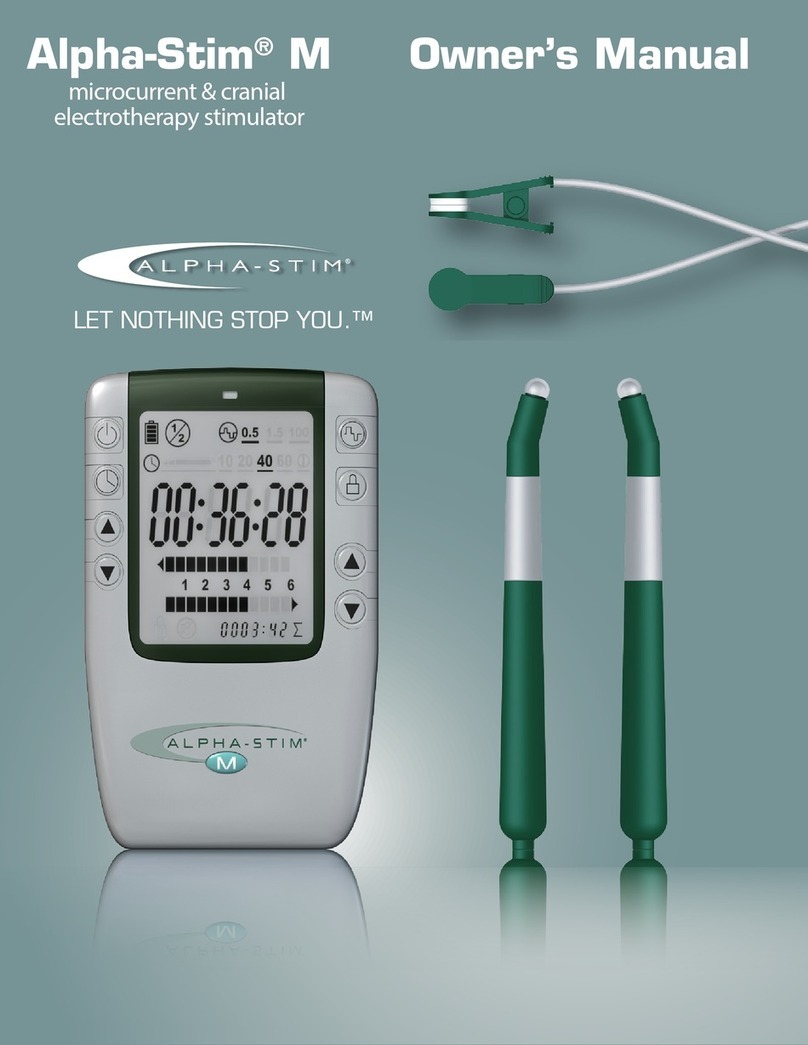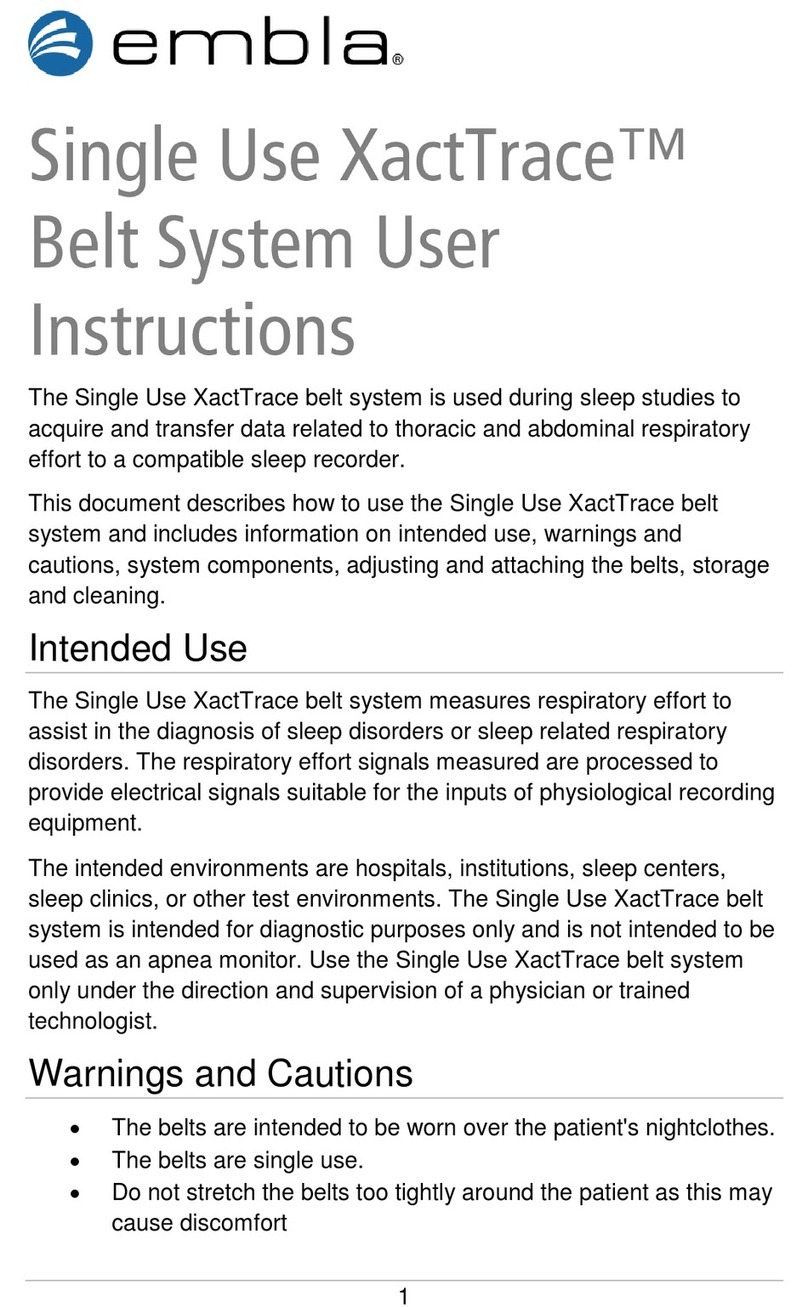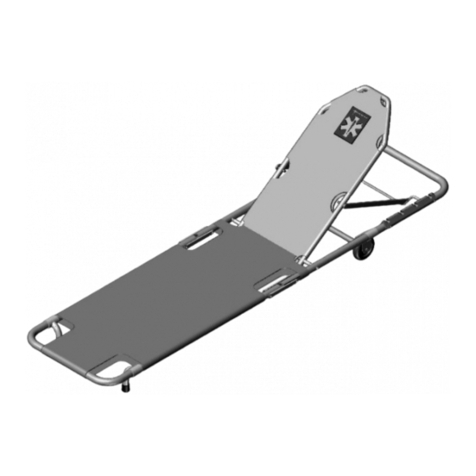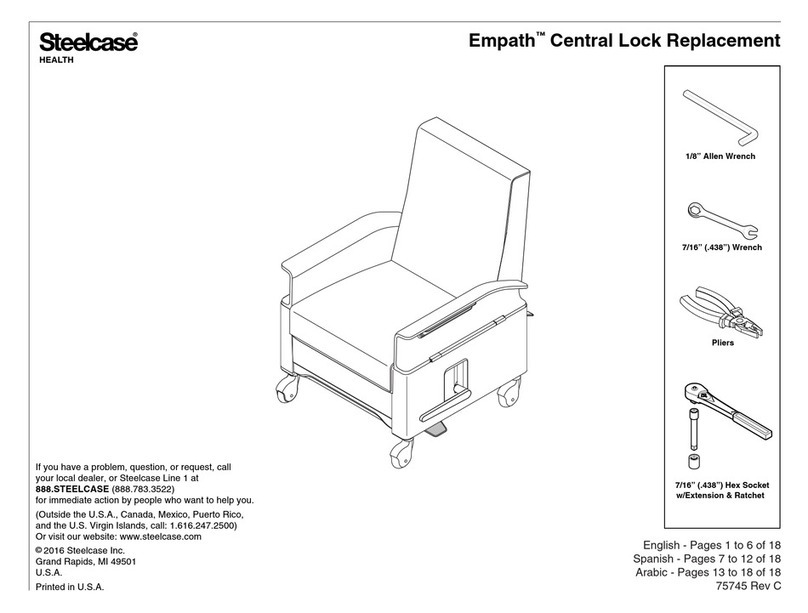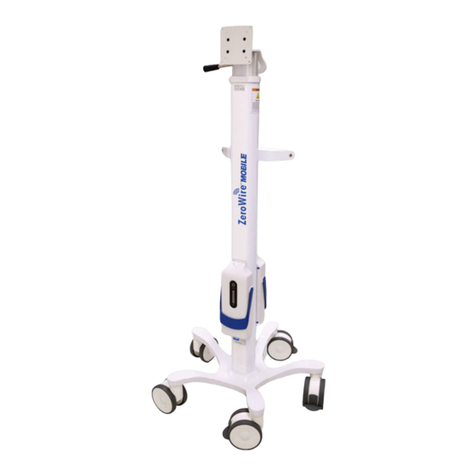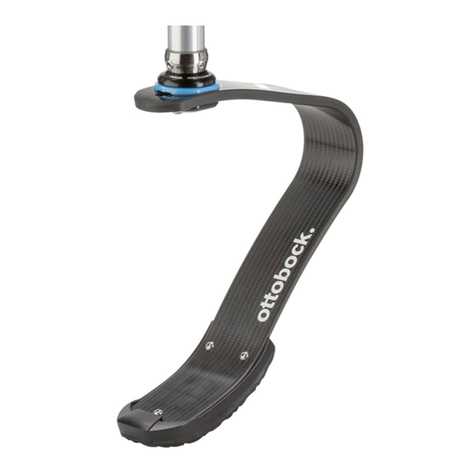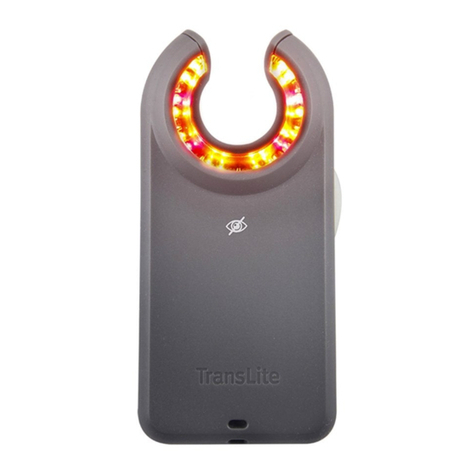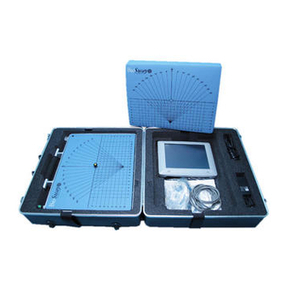General Data Healthcare RTPH-360 User manual

®
A Division of General Data Healthcare
Histology Innovation for a NEW Generation
Operator’s Manual
Product Name
Here
RTP™/RTPH™-360
Rapid Tissue Processor
Catalog #s
RTP-360; RTPH-360
Pub No.: OM RTP360-1
May 2014
RTP-360


3 | Page
General Data Healthcare, Inc.
Copyright©2009 General Data Company. All rights reserved
This document may not be copied in whole or in part or reproduced in any other media without the express
written permission of TBS-A Division of General Data Healthcare, or General Data Healthcare. Please note that
under copyright law, copying includes translation into another language.
General Data Healthcare TBS-A Division of General Data Healthcare
Corporate Headquarters 3014 Croasdaile Road
4354 Ferguson Drive Durham, NC 27705
Cincinnati, Ohio 45245 tel. 919-384-9393
Tel. 513-752-7978 Fax. 919-384-9595
Fax.513-965-3636
User Resources and Customer Support
Contact your TBS representative for customer support. For the latest information on TBS products and
services, please visit the TBS website at: www.trianglebiomedical.com.
Scope
This document contains basic information on the use and operation of the RTP™-360 Tissue processor, and
assumes you have received basic training on the instrument. Please contact your TBS representative for
information not provided in this manual.
Intended Use
This instrument has been designed to be solely used in a Histology laboratory, by trained technicians, for
processing specimen, provided that is used accordinglywith the instructions contained in this manual.
The RTP™-360 is a tissue processor designed for the following laboratoryapplications:
•
fixation
•
dehydration
•
Paraffin wax infiltration of histological tissue samples. Anyother usage is expresslyprohibited.
Failure to follow to these instructions may result in accidents, damages to the instrument and accessory
equipment, personal injury.
Installation Procedure
The RTP™-360 Tissue Processor must be installed, and instrument performance is to be verified, at the
customer site by trained TBS representatives.
Disclaimers
This manual is not a substitute for the detailed operator training provided by TBS, or for other advanced
instruction. A TBS representative should be contacted immediately for assistance in the event of any
instrument malfunction.

4 | Page General Data Healthcare, Inc.
Operator Controls and Components
Back Panel

5 | Page
General Data Healthcare, Inc.
Table of Contents
Copyright©2009 General Data Company. All rights reserved ................................................................................. 3
Operator Controls and Components .......................................................................................................................... 4
Declaration of Conformity............................................................................................................................................ 7
Instrument Compliance................................................................................................................................................ 8
Section 1 | Safety Instructions .................................................................................................................................... 9
Safety Devices................................................................................................................................................. 10
Protection against overheating.................................................................................................................... 10
Protection against over-pressures............................................................................................................... 10
Fuse replacement........................................................................................................................................ 10
Remote Alarm.............................................................................................................................................. 10
Runtime Test................................................................................................................................................ 10
SPC (Sample Processing Chamber) lid heating............................................................................................ 11
Section 2 | Performance and Specifications............................................................................................................ 12
Technical Specifications .................................................................................................................................. 12
Section 3 | Preparation/Installation........................................................................................................................... 14
Unpacking, transporting and handling............................................................................................................. 14
Unpacking........................................................................................................................................................ 14
Packaging and/or preparation for transport ..................................................................................................... 15
Transportation.................................................................................................................................................. 15
Installation and start-up.................................................................................................................................... 15
Initial stage set-up ....................................................................................................................................... 16
Before starting a process............................................................................................................................. 16
At the end of a process................................................................................................................................ 16
Section 4 | Operation.................................................................................................................................................. 17
Introduction to the RTP™-360 Tissue Processor.............................................................................................. 17
User interface and keyboard........................................................................................................................ 17
Monitor......................................................................................................................................................... 17
Screen Saver............................................................................................................................................... 17
Rear panel ................................................................................................................................................... 19
The RHE device........................................................................................................................................... 19
Reagents.......................................................................................................................................................... 20
Reagent tanks arrangement........................................................................................................................ 20
Compatible reagents.................................................................................................................................... 20
Disposable factory pre-filled bottles............................................................................................................. 20
RFD – Remote Fill and Drain system .......................................................................................................... 21
EWD/PWD - External or ProtectedWax Dumping..................................................................................... 23
Filling Paraffin Cylinders .............................................................................................................................. 24
Wax Cleaning Cycle (WCC) ........................................................................................................................ 24
Processing capacity..................................................................................................................................... 24
Level Sensors.............................................................................................................................................. 24
Half-Load function........................................................................................................................................ 25
SETUP............................................................................................................................................................. 27
PARAMS SETUP............................................................................................................................................. 27
RHE Set Point.............................................................................................................................................. 29
RMS SETUP.................................................................................................................................................... 29
HOUR and DATE............................................................................................................................................. 29
PASSWORD SETUP....................................................................................................................................... 29
ReagentLabels ............................................................................................................................................ 30

6 | Page General Data Healthcare, Inc.
SERVICE......................................................................................................................................................... 30
EXT. SERVICE................................................................................................................................................ 30
START MENU ................................................................................................................................................. 31
Programming process protocols.................................................................................................................. 31
Reagent Names........................................................................................................................................... 31
Time............................................................................................................................................................. 31
Reagent Management System (RMS)............................................................................................................. 33
RMS basic concepts.................................................................................................................................... 33
The DAF (Decreasing Aging Factor)............................................................................................................ 34
RMS setup................................................................................................................................................... 35
RMS Define Reagents................................................................................................................................. 35
RMS Define Limits....................................................................................................................................... 35
RMS Counters Total Reset.......................................................................................................................... 36
RMS Single Counter Reset ......................................................................................................................... 36
RMS Enable/Disable.................................................................................................................................... 36
Purge Agents Setting................................................................................................................................... 36
Print RMS Status & Print RMS Setup.......................................................................................................... 37
Using the RMS............................................................................................................................................. 37
Checks and Procedures before operating................................................................................................... 38
Delay setting................................................................................................................................................ 39
Process END-TIME memory ....................................................................................................................... 39
Start from step different from the first.......................................................................................................... 40
Starting a process program ......................................................................................................................... 40
Interrupting/suspending the process............................................................................................................ 40
Opening the SPC lid during a process......................................................................................................... 40
Process completion ..................................................................................................................................... 41
Purging the SPC.......................................................................................................................................... 41
Purge Steps................................................................................................................................................. 41
Timing.......................................................................................................................................................... 42
Vacuum and Pressure................................................................................................................................. 42
Heating ........................................................................................................................................................ 42
Circulation/Agitation..................................................................................................................................... 42
RHE ............................................................................................................................................................. 42
Reagents warm-up by the RHE................................................................................................................... 45
Examples of fast protocols (with RHE......................................................................................................... 45
Fixation........................................................................................................................................................ 47
Graphs of the last 30 processes executed .................................................................................................. 47
Section 5 | Service...................................................................................................................................................... 48
Periodic Maintenance ...................................................................................................................................... 49
Section 6 | Troubleshooting ...................................................................................................................................... 50
Alerts and Alarms............................................................................................................................................. 50
Managing alarms......................................................................................................................................... 50
NON BLOCKING ALERTS:............................................................................................................................. 50
BLOCKING ALARMS:...................................................................................................................................... 50
Procedure for the instrument reset .............................................................................................................. 50
NON-BLOCKING ALERT CODE..................................................................................................................... 51
BLOCKING ALARM CODES........................................................................................................................... 56
Appendix 1 | Accessories.......................................................................................................................................... 59
Printers ........................................................................................................................................................ 59
UPS (Uninterruptible Power Source............................................................................................................ 59
Appendix 2 | Glossary of Abbreviations .................................................................................................................. 61

7 | Page
General Data Healthcare, Inc.
Konformitätserklärung
Déclaration de conformité
Declaración de Confomidad
Verklaring de overeenstemming
Dichiarazione di conformità
We/Wir/ Nous/WIJ/Noi
TBS-A Division of General Data Healthcare
Declare under our sole responsibility that the product,
erklären, in alleniniger Verantwortung,daß dieses Produkt,
déclarons sous notre seule responsabilité que le produit,
declaramos, bajo nuestra sola responsabilidad, que el producto,
verklaren onder onze verantwoordelijkheid, dat het product,
dichiariamo sotto nostra unica responsabilità, che il prodotto,
RTP™/RTPH™-360 Tissue Processor
to which this declaration relates is in conformity with the following standard(s) or other normative documents.
auf das sich diese Erklärung bezieht, mit der/den folgenden Norm(en) oder Richtlinie(n) übereinstimmt.
auquel se réfère cette déclaration est conforme à la (aux) norme(s) ou au(x) document(s) normatif(s).
al que se refiere esta declaración es conforme a la(s) norma(s) u otro(s) documento(s) normativo(s).
waarnaar deze verklaring verwijst, aan de volende norm(en) of richtlijn(en) beantwoordt.
a cui si riferisce questa dichiarazione è conforme alla/e seguente/i norma/o documento/i normativo/i
Declaration of Conformity

8 | Page General Data Healthcare, Inc.
Instrument Compliance
TBS-A division of General Data Healthcare, hereby declares the equipment specified conforms to the
Classification(s), Directive(s) and Standard(s) set forth in this document.
Certifications:
CE, TUV CSA UL
EMC Immunity
IEC 61010-1:2001 (Second Edition) / EN 61010-1: 2001
CAN/CSA C22.2 No. 61010-1 +GI1 (2nd Edition, R2009);
UL 61010-1 (2nd Edition, R10.08)
IEC 61010-2-010: 2003 (2nd Ed) for use with IEC 61010-1: 2001
EN 61010-2-010: 2003, CAN/CSA 22.2 No.61010-2-010-4 (R9)
IEC 61010-2-101: 2002 (ed.1) for use with IEC 61010-1: 2001 (ed.2)
EN 61010-2-101: 2002 (ed.1) for use with IEC 61010-1: 2001 (ed.2)
CSA C22.2 61010.2.101-04-2004

9 | Page
General Data Healthcare, Inc.
Section 1 | Safety Instructions
Severe damage can result if the instrument is connected to a power supply different from the
rating stated in the identification tag placed on the rear of the instrument.
The instrument must NEVER be used without being connected to an appropriate and fully
efficient ground connection.
If damages due to transport occur, DO NOT use and DO NOT connect the instrument to a
power source. Contact our technical service.
This instrument has been designed to work 24/7; for this reason and for operative precautions,
the power switch is placed on the rear of the instrument.
Access to the instrument’s internal components is reserved only to specialists trained in the
service of the instrument.
Always disconnect the processor from the electrical main source before accessing the
electronics and internal parts.
BEFORE replacing fuses, disconnect the instrument from the power source.
Always make certain to correctlyengage the reagent bottles.
DO NOT open the processing chamber lid when the instrument is working without following the
instructions contained in this manual
Use specific precautions in handling flammable reagents such as ethanol (wear protective
gloves and eyeglasses).
Use specific precautions in handling liquid paraffin’s as they can cause burns
The emptying and filling of reagent bottles must only be done only by qualified technicians
Due to the presence of flammable substances inside reagents bottles, it is recommendedto:
Avoid smoking near the instrument
Avoid using open flames near the instrument.
DO NOT wear clothes that can create electrostatic charges while handling reagents.
Contaminated reagent waste must be disposed of in accordance with all applicable local
laws, ordinances and safety standards.
Use only original spare parts supplied by the manufacturer or by authorized dealers
DO NOT extract bottles, replace reagents or do other maintenance operations when the
instrument is operating.
To complete the knowledge on the instrument safety please read also the chapter SAFETY
DEVICES near the end pages of this manual.

10 | Page General Data Healthcare, Inc.
Safety Devices
Protection against overheating
The thermostat controls include a thermal overtemp switch to prevent overheating of WWC and SPC.
These devices do not prevent alarms, but prevent overheating when primary control devices fail. DO NOT use
the instrument when an alarm indicates an abnormal temperature status.
In the event of an overheating, it is advisable to switch off the instrument and disconnect the power cord.
Protection against over-pressures
In the RTP™-360 and RTPH™-360, there is no danger of excessive pressures. The pressure levels
developed in the SPC are small and do not present any hazard. Sometimes a slight pressure can be
present in the SPC at the end of a process. The lid must be opened with care to avoid the possibility of
eye injury by reagent vapors and splashing. Always wear safety glasses when handling reagents.
Fuse replacement
Fuse replacement should be done only by qualified personnel. Please note: Always disconnect
the instrument from the main power line! Never use fuses of a different rating and never try to repair damaged
fuses.
The RTP™-360 and RTPH™-360, is equipped with two line voltage fuses.
Fuses are placed into fuse holders located on the rear panel. Rating:
100V = 20A / 110V = 16A / 125V = 13A / 225V = 8A / 240V = 8A / (6.3x32mm) (T)
After the instrument is powered, if a fuse blows again, do not try to substitute it another time! A possible main
electrical failure is undergoing in the instrument.
Call our service department for technical assistance.
Remote Alarm
The socket of the Remote Alarm connector has 3 contacts with the following disposition:
- No alarm = contacts 1-2 closed, contacts 1-3 open.
- Alarm active = contacts 1-2 open, contacts 1-3 closed.
For the location of the Remote Alarm connector please refer to the paragraph “The Rear Panel” at the
beginning of the manual. There are no electrical signals on the remote alarm contacts. They are isolated from
the rest of the instrument and can be used to activate an external device such as an Auto-Dialer to call a pre-
selected phone number and relay the message that an alarm occurred.
Rating of the remote alarm connector and its associated electronics:
- Maximum voltage: 48V ac/dc.
- Maximum current: 1A
Runtime Test
Before starting a function (process or purge), the instrument executes a series of tests to verify the
conditions are correct foroperating.
If the test fails, the requested action is aborted and an alarm is issued. The tests include:
•Temperatures of all the heated components, those temperatures must be compatible with their
correct operational ranges.
•SPC lid:, Monitors the position of the SPC lid, if the lid is open, an alarm is issued.
•Pressure Transducer: Monitors pressure in the SPC
•VR Position: VR position Sensor Monitors the position of the Rotary Valve.
•The content of the starting process program, if the program is incomplete or part of
the data is lost or inconsistent the process cannot be started
•Various memory variables to make sure that a process is not started with the SPC empty or
dirty.
•Active alarms: no active alarm can be present at the starting of a process or purge.
•The UPS: if a UPS is installed and active, and there is a power failure, even if the
instrument is working, no process can be started because the UPS autonomy is limited to
30 or 60 minutes depending on the charge status of the batteries.

11 | Page
General Data Healthcare, Inc.
SPC (Sample Processing Chamber) lid heating
The SPC lid is heated independently from the SPC and WWC heating, this reduces the buildup
of condensation beneath the lid when in the SPC contains a warm reagent.
The efficiency of the heating is sufficient to avoid most of the condensation, only a few drops of
reagent may still be present in the peripheral zones of the lid, especially when the reagent inside
the SPC is warm and the outside (ambient) temperature is particularlylow (under 20°C).
The temperature of the inside lower face of the SPC lid may reach 54-60°C, so it can be
uncomfortable to the touch but it is not dangerous. The limited power of the heating element (22W)
compared to the mass and size of the lid makes it impossible to reach dangerous temperatures. An
overtemp thermostat (80°C max) has been added to the heater to prevent any over temperature
situation.

12 | Page General Data Healthcare, Inc.
Section 2 | Performance and Specifications
The RTP™/RTPH™-360 tissue processor recycles the air utilized to move the reagents to and from the
processing chamber. An effective charcoal filter reduces the exhaust fumes contamination to acceptable
and safe levels.
The RTP™/RTPH™-360 is contains a device called RHE (Rapid Heat Exchanger) capable of
warming the reagents during the fill cycle into the SPC without extended delays, thus reducing
processing times.
The reagent bottles can be quickly removed and reinstalled in their housing slots.
The control devices (hardware and software) are based on the most up-to-date processing control
technologies. Up to 18 different programs can be permanently stored and be easily modified. The
18
th
program is a special “REVERSED” program that is used to de-process samples that did not have good
infiltration. During a run, every step and action is displayed on the screen, such as current step and function
(emptying, filling, etc.), processing chamber and paraffin heating chamber temperatures, processing chamber
pressure, completion time and date, and any other parameter necessary to simplify the use of the instrument.
In the event of power failures, the computer saves all the data necessary to restart the process exactly
where it
was interrupted. If the interruption happens during the paraffin stages, particular precautions are taken to
guarantee their melting before anyfilling or draining begins.
Technical Specifications
RTP™-360
Item
Description
Rating
100/240V 50/60Hz (not user-adjustable)
Max power
1500 W
Main Fuses
100V = 20A / 110V = 16A / 125V = 13A
225V = 8A / 240V = 8A / (T) (dim. 6.3 x 32
Weight
225 Kg (496 lbs.) (empty) – 284 Kg (626 lbs.) (with
th
e crate)
Running ambient temperature
10° to 30°C
Storing temperature
-10° to 50°C
Relative Humidity
Max 80% (not condensing)
IEC1010 classification
Protective Class 1, Pollution degrees 2
O
vervoltage category II
-
800V impulse (115V versions)
- 1500V impulse (230V versions)
Classification 98/79/EC – IVD
Other general devices – Annex III (without 6)
Max elevation (maximum altitude from the sea
le
vel, and related ambient pressure, at which
the instrument can be operated)
2500
m (8202 ft.) msl
Temperature controls precision
+/- 1°C
Remote alarm socket and relay
48V DC/AC, 1A maximum
Paraffin Tanks/Volume
3 / 4 L
Paraffin Melting Time
Approx. 8 hours
Paraffin Temperature Range
52°– 65°C (default 60°)
Sample Processing capacity
360 standard cassettes
SPC working temperature
From ambient to 65°C
Pressure range
600/1200 HPa
Reagent Tanks/Volume
10 / 4 L
Purge agents Tanks/Volume
2 / 4 L
Printer
Normal paper – optional - connected on USB port
RMS – Reagent Management System
For all reagents, purge agents, charcoal filter
WCC – paraffin Cleaning Cycle
Efficient on site system (no SPC filling)
Reagent Agitation
User selectable (from 5 min. to 30 min. frequency)
RFD – Remote Fill/Drain
For reagents and purge agents
Data backup
On USB memory
User interface
LCD 15” color monitor with Touch Screen

13 | Page
General Data Healthcare, Inc.
RTP™-360 (cont.)
Item
Description
Process Programs
18 (including one for reverse processing)
Delay
Up to 14 days, 23 hours, 59 minutes.
Process End Time management
For every process program, with auto-memorization
Purge
1 – factory optimized + 3 customizable
Charcoal filter
1 – easy substitution and safe handling
Password
User selectable, multilevel
Power failure device
In the event of a power failure, the processor
restarts the process from the interrupted point.

14 | Page General Data Healthcare, Inc.
Section 3 | Preparation/Installation
Unpacking, transporting and handling
Before moving or transporting the instrument, it is essential to carefully read this chapter, paying particular
attention to the instrument setup instructions.
The warranty is invalid if the instrument is improperly operated. Be certain to follow the instructions and
recommendations provided by this manual. The manufacturer is not responsible for damages resulting from
improper operation or handling of the instrument.
Pay particular attention to the outside of the shipping container. In the event of concealed damage, save all
shipping crates and packing material. DO NOT unpack the instrument if damage is apparent or evident.
Immediatelynotify the carrier of any damage and contact the shipper to report any claim.
Unpacking
1. Open the top of the crate.
2. Lift the side walls out of the way.
3. Remove accessories from the crate (refer to accessories list).
4. Remove plastic bags that cover the instrument.
5. Position the crate cover close to the instrument wheels as shown in the pictures.
6. Raise the instrument to the vertical position together with the crate base.
7. Remove the screws that fix the instrument at the base.
8. Carefully check the external condition of the instrument. If damage is noted, DO NOT install the
instrument. Immediatelynotify the carrier and promptlycontact the seller.
9. For the setup of the instrument, see the specific chapter (Installation and Start-up) in this
manual.
10. Save the box and all the internal packages in the event the unit would require future shipments.

15 | Page
General Data Healthcare, Inc.
Verifythe presence of the following accessories and components:
Item #
Desc
ription
Q
.ty
9
A6RFDE
R
FD hoses (Remote Fill & Drain tubes)
2
9
A6EWDF
E
WD hose (External Wax Dumping tube)
1
7
EC960
Re
mote alarm connector
1
8
V1250-A
B
asket, 150 cassettes (with cover and dividers)
2
8
V1259-A
B
asket carrier
1
7
TSM04
Vi
deo Touch Screen
1
7
P
B
C
02
-C
Reagent
Bottles (with Delrin connectors)
10
P
urge Bottles (with Delrin connectors)
2
9
A1070
Cha
rcoal Filters
1
7
EV998
Ma
in power cord 115-230V - 16A
1
8
nnMAN
U
ser Manual
1
IO
755.05
Cha
rcoal filter installation instructions
1
Packaging and/or preparation for transport
To transport the instrument, perform the following steps:
1. Remove all reagents (paraffin’s included) from their bottles and containers.
2. Remove and close, with the proper threaded cap, the charcoal filter bottle, seal with
adhesive tape the filter air inlet to avoid charcoal pellets to get out.
3. Transport the charcoal filter separately from the instrument, wrapped and securely closed in a
protective nylon bag
4. If the original box has been saved, follow the unpacking instructions in the reverse order, using all
the interior packaging to avoid potential damages to the instrument during shipping
Transportation
The instrument is fragile;
1. The instrument is equipped with electronic parts;
2. Contact with water and/or any other liquid is to be avoided; please ensure that the internal
plastic protection bag that wraps the instrument is utilized;
3. Transporting and storing temperature(s) must be between -10°C +50°C;
4. Using the original box, the instrument is to be transported horizontally;
5. Transporting the instrument verticallyis highlydiscouraged as its center of gravityis quite high.
Installation and start-up
1. Install of charcoal filter in the back of the instrument in the slot marked Charcoal Filter. Next,
remove the cap from the charcoal filter bottle and make a hole with a screwdriver or a pencil in the
tape that seals the air intake on the top rear of the bottle.
2. Install the spacer cylinders in the back of the instrument;this will maintain a minimum 10 cm distance away
from the wall.
3. Connect the LCD screen. The LCD screen is transported unconnected in a separate cardboard box.
4. The screen must be placed on the top left of the instrument housing. The mechanical connection is
made by an M6 screw supplied together with the instrument. The electrical connection is made by
connecting the 2 connectors on the instrument rear panel. There isn’t any danger of mistaken
connection; each connector is different from the others.
5. Connect POWER CORD. The power connection must provide the right VOLTAGE and POWER in
relationship to the rating indicated on the instrument identification label.

16 | Page General Data Healthcare, Inc.
The above image depicts the transformer in the 240V configuration. Relocating the BROWN wire labeled PF to
the 125 connector will change the transformer output voltage to 120V
Follow local code for installation of electrical outlets. The RTP™/RTPH™-360 can connect to an optional UPS
(uninterruptible power supply) can be utilized to provide power in the event of power outages and protection
against power fluctuations. It is recommended that the instrument is operated away from heat (radiators,
stoves, direct sunlight, etc.) and moisture (sinks, drains, etc.).
NOTE: It is recommended to install The RTP™/RTPH™-360 in a place where it is possible to easily reach
the back panel of the unit to de-energize the Tissue Processor or remove the Power Cord in case of an
emergency.
Check-lists for using the instrument
Initial stage set-up
•Check system time and date.
•Set reagent and protocol names.
•Check and set SETUP parameters.
•Set protocols.
•Fill paraffin containers and reagent bottles.
Before starting a process
•Check paraffin containers and reagent bottle levels.
•Check the processing chamber for cleanliness.
•Insert samples into the processing chamber.
•Firmlyclose the processing chamber lid.
•Select the desired protocol.
•Enter date and time of program completion (including a delayed end-of-process time if desired)
•Enter the number of cassettes and basket processed.
At the end of a process
•Follow the instructions to drain the last reagent.
•Wait for complete emptying before opening the processing chamber.
•Take samples out of the processingchamber.
•Clean the SPC and lid from any paraffin residue.
•Execute the purge program.
•At the end of the purge program, check that the SPC and lid are clean of any trace of paraffin or
foreign bodies. If necessary, complete the cleaning manually.
•Check the graph of the last process executed (from the START menu press the key GPH) to verify if
the process has been executed properlyand without anyfault.
Configuring Transformer Voltage

17 | Page
General Data Healthcare, Inc.
Section 4 | Operation
Introduction to the RTP™-360 Tissue Processor
User interface and keyboard
Monitor
The user interface is based on “Touch Screen” technology. Therefore there isn’t any traditional keyboard; all
the instrument functions are activated by a touch.
At the bottom of the screen there is a window, with a green background color used for messaging the
operator. Those messages inform and guide the operator about actions that can or must be taken to safely
operate the instrument
Screen Saver
The screen saver de-energizes the screen power 30 minutes after the last time somebody touched the screen
surface. Touching the screen will re-start the power and the screen functions in approximately 1 second.
IMPORTANT NOTE: in case of TOUCH-SCREEN malfunction, it is possible to continue to operate the
instrument by simply connecting a mouse in one of the USB ports available on the instrument back
panel. The mouse must be Windows XP compatible. The operating system should recognize it
promptly by plug-and-play functions, in case it would not work, please try restarting the instrument
(power OFF then ON after 10 seconds).
The screen graphics of the instrument hydraulic circuit indicates:
•The position of the rotary valve,
•The SPC and its level.
•Reagents quality (cap color),
•the level of reagent in the tanks,
•Charcoal filter status.

18 | Page General Data Healthcare, Inc.
By pressing on the icon (info) a small window will appear
with the following information:
•SPC - Sample Processing Chamber Pressure.
•SPC - Sample Processing Chamber Temperature.
•WAX - Paraffin Chamber Temperature.
•RHE - Rapid Heat Exchanger Temperature.
•RMS - Reagent Management System status.
•EWD - Automatic wax dumping status.
•WCC - Paraffin (Wax) Cleaning System status.
•UPS - status and batterycharge.
•Charcoal Filter status - (0% = new; 100% = exhausted)
•Process executed progressive number.
•Purge - Instrument current action. Purge status.
•SPC Content
•First number represents the current contents.
•Second number the last reagent used.
•Alarms – A number 1 through 99 will displayed
- There are two menus (START and SETUP) that can
be activated by simply pressing on their icons. The
menus will disappear in 30 seconds if the not used.
- At the bottom of the display a small window with
messages for the operator is always visible; the
messages will guide and inform the operator about what
is going on in the instrument and about what he(she)
can/cannot do. In order to correctly operate the instrument
the messages must always be carefully followed.

19 | Page
General Data Healthcare, Inc.
Screen
Rear panel
On the rear panel of the control module there are:
MAIN POWER = On/Off main switch and Main power connectionmodule.
FUSES = Fuses holder
REMOTE ALARM = Remote Alarm socket:
No alarm = pins 1-2 closed, pins 1-3 open
Alarm = pins 1-2 open, pins 1-3 closed
Please note: This socket is a low voltage connection (maximum 48V, 1A) insulated from the rest of the
instrument. An Auto Dialer or other external alarm notification devices can be connected here.
RS232 = 3x RS-232 serial ports
RESET = Reset button
USB = 4x USB ports to connect various peripherals like: touch screen, keyboard, mouse, printer, UPS
VGA = LCD screen connector
ETHERNET = 2x network connection (Internet, Intranet)
The RHE device
The RHE (Rapid Heat Exchanger) is a device capable of warming up the reagents (tanks from 1 to 10)
during their transfer into the SPC. The heating of the reagents up to 55-60°C allows the performing of faster
processing especially on small samples (biopsies).
The Rapid Heat Exchanger is comprised of electric heating pads in between coils of copper tubing encased
in an insulated compartment. Temperature is regulated through the software and for added safety,
overtemp thermostats are incorporated to prevent overheating.
Utilizing the RHE increases the reagents temperature 30-35°C prior to entering the SPC thereby reducing
the processing time. Filling time is only increased by approximately 15 seconds.

20 | Page General Data Healthcare, Inc.
Reagents
Reagent tanks arrangement
The following table shows the arrangement of the instrument tanks for reagents, paraffin’s, purge agents and
charcoal filter as seen from the instrument front.
C1
Charcoal filter (Located in the back of the instrument)
C2
Condensate Bottle (Located in the back if the instrument)
P2
Purge agent 2 (Ethyl Alcohol 95/100)
P1
Purge agent 1 (Xylene or substitutes)
11 -> 13
Paraffin’s
1 -> 10
Reagents
Compatible reagents
The following reagents can be utilized in the RTP™/RTPH™-360 without any risk of damage:
- Water
- Formalin
- Ethyl alcohol (pure or denatured)
- Methyl alcohol
- Xylene
- Xylene substitutes
- Paraffin wax
The following materials are used in the construction of the RTP™RTPH™-360. Reagents other than those
listed above can be utilized in the instrument if they DO NOT damage the materials listed:
Stainless steel Processing Chamber, Rotary Valve, connectors
Teflon Rotary Valve, air pump
Kynarflex Reagent pipes
Viton Seals
Glass Vapor trap
HDPE paraffin and reagent bottles
Delrin (Acetalic resin) Connectors
Nickel Air connectors, solenoid valves
The manufacturer is NOT responsible for damages due to the use of reagents NOT listed here.
WARNING: DO NOT use Acetone, Benzene or Trichloroethane. We also advise against the use of fixatives
containing mercury salts, acetic or picric acid as they may corrode the metal components of the instrument
and shorten a component’s useful life.
Disposable factorypre-filled bottles
The RTP™/RTPH™-360 can utilize disposable, ready-to-use, factory pre-filled reagent bottles. It is very
important to note that the use of pre-filled bottles is possible without making any changes to the instrument. It
can be done at the same time with the use of bottles refilled by the user.
Advantages of using disposable pre-filled bottles include:
•Faster reagent replacement.
•Minimal user handling exposure to toxic vapors.
•Reduction of risks from handling flammable substances.
•Eliminates the technician time required to empty, clean and re-fill bottles.
Replacement of disposable bottles is easy:
•Take the bottle containing the exhausted reagent out of its slot and bring it under a cabinet.
•Unscrewthe cap of the bottle with the new reagent.
•Unscrewthe cap of the used bottle and place it on the new bottle.
•Place the cap removed from the new bottle on the used bottle.
•Insert the new bottle into its housing slot.
This manual suits for next models
1
Table of contents
Other General Data Healthcare Medical Equipment manuals
Popular Medical Equipment manuals by other brands
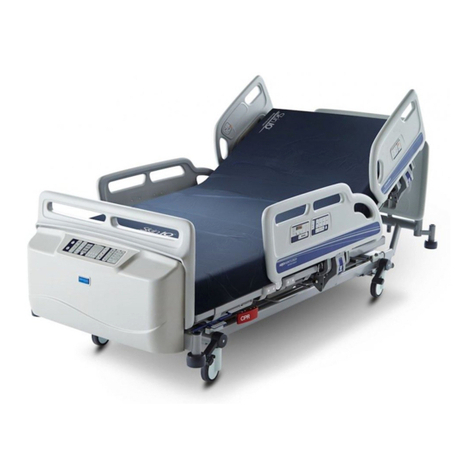
ARJO HUNTLEIGH
ARJO HUNTLEIGH citadel Quick reference guide

Cooper Surgical
Cooper Surgical Wallach UltraFreeze Instructions for use

I-Tech
I-Tech MAG 1000 user manual
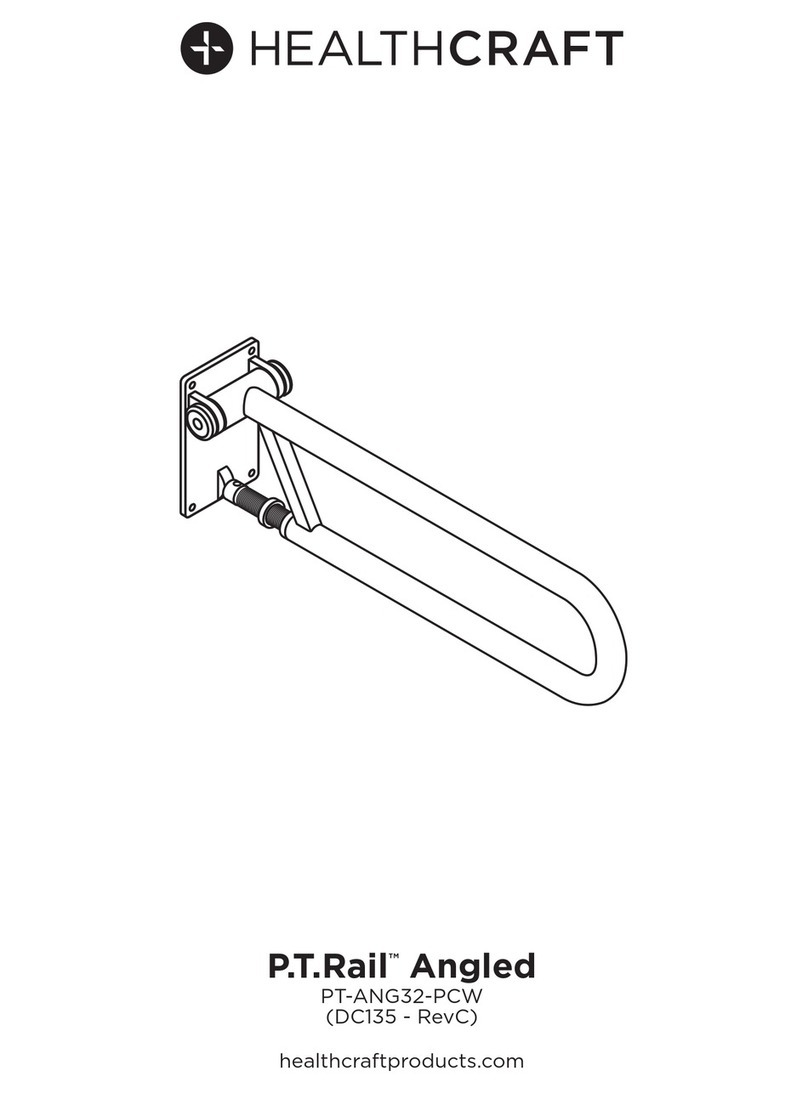
Healthcraft
Healthcraft P.T.Rail Angled manual
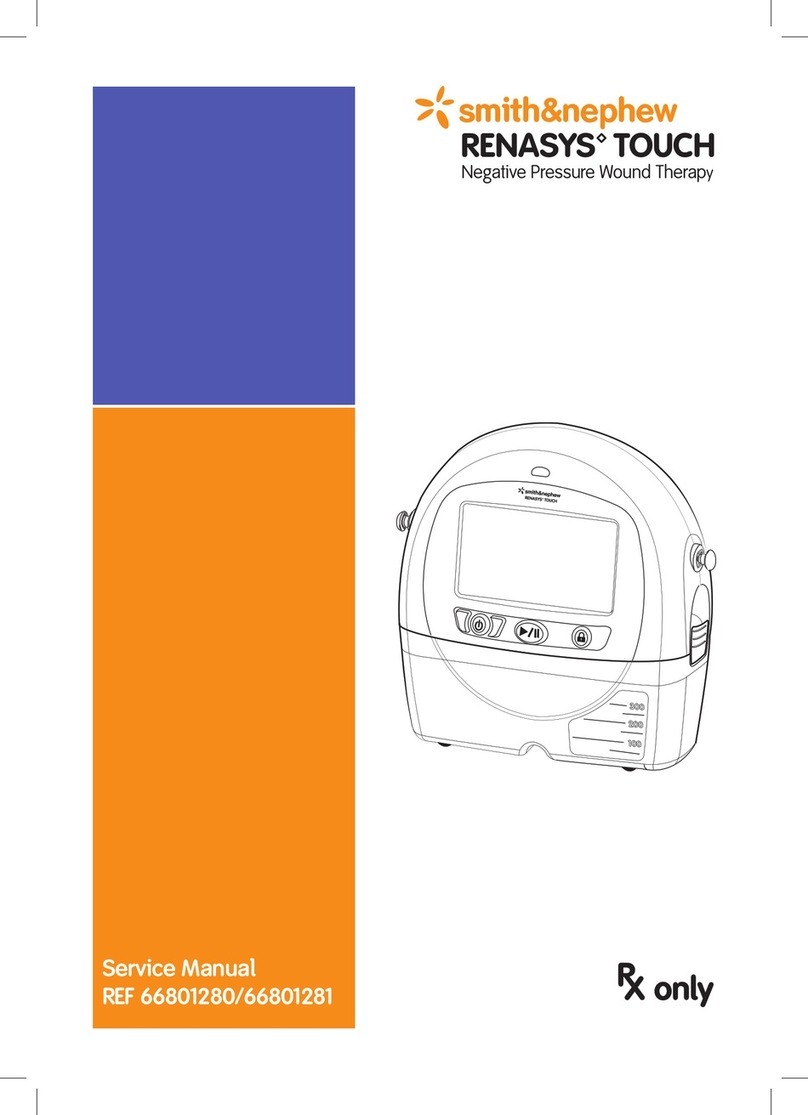
Smith & Nephew
Smith & Nephew RENASYS TOUCH Service manual
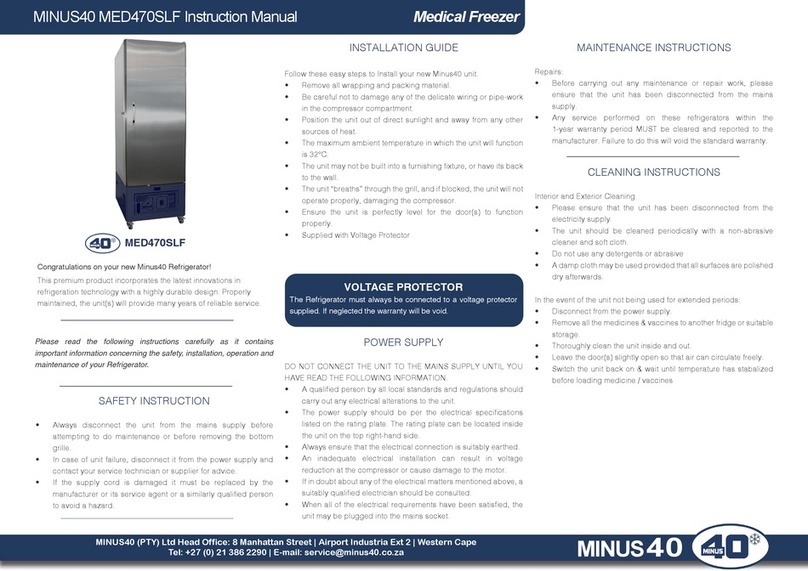
minus40
minus40 MED470SLF instruction manual

